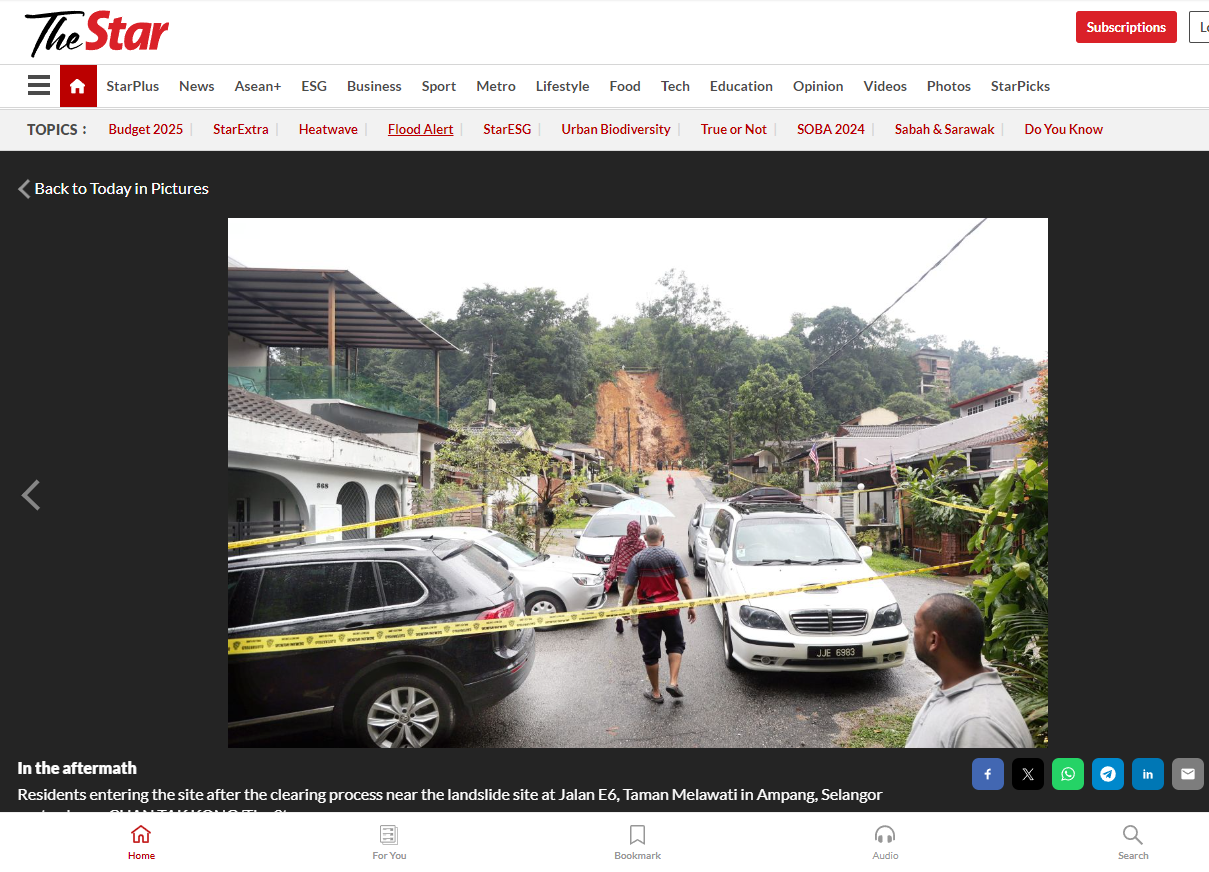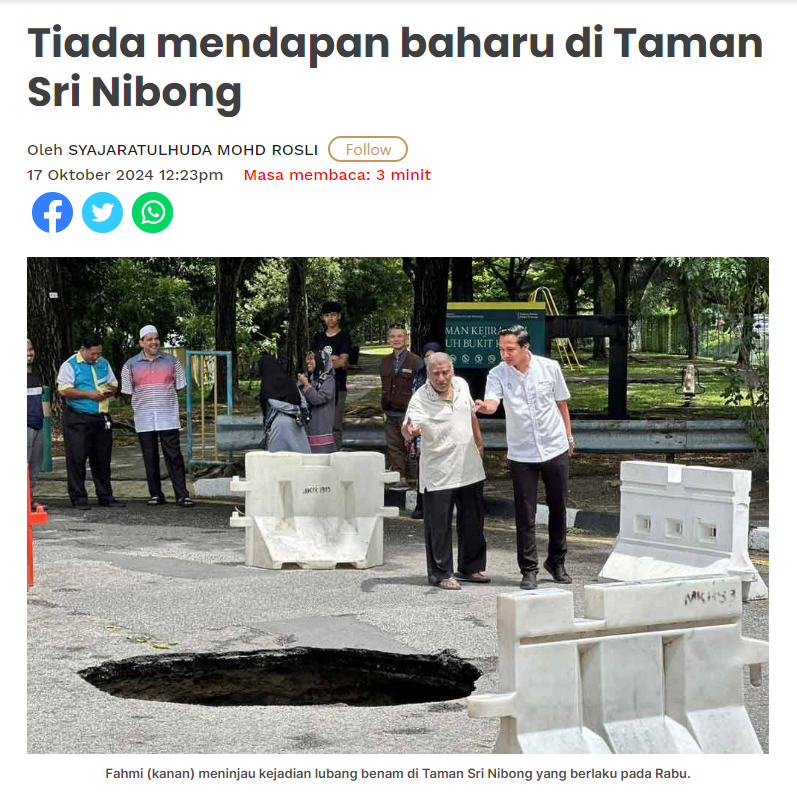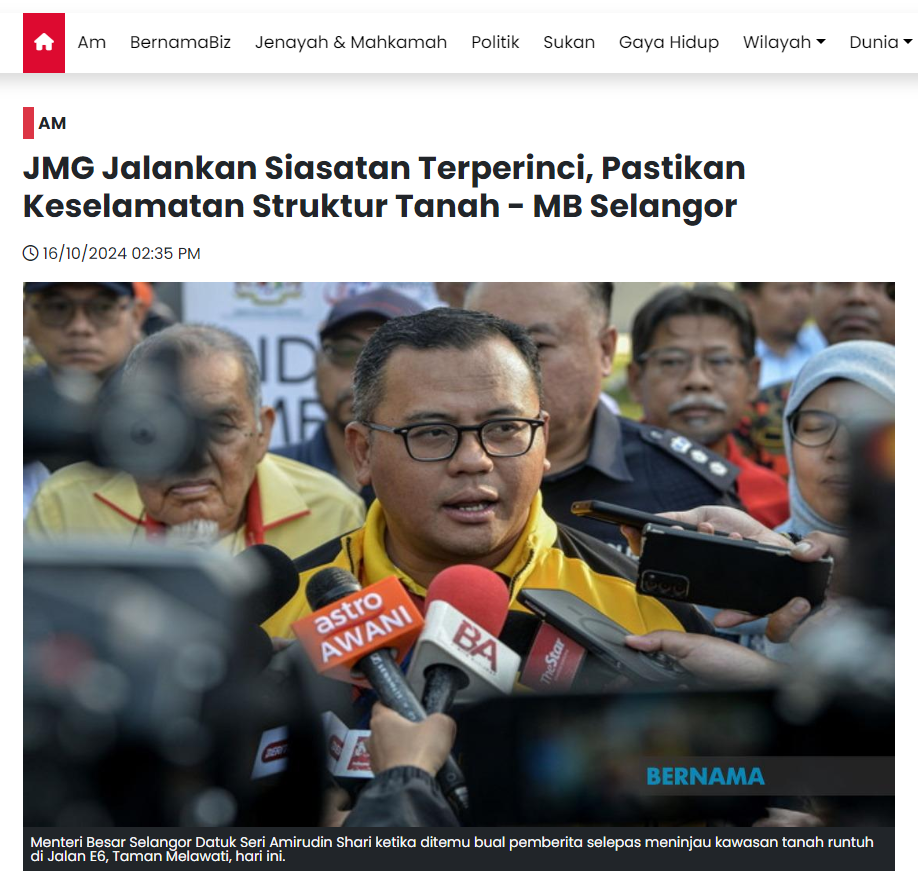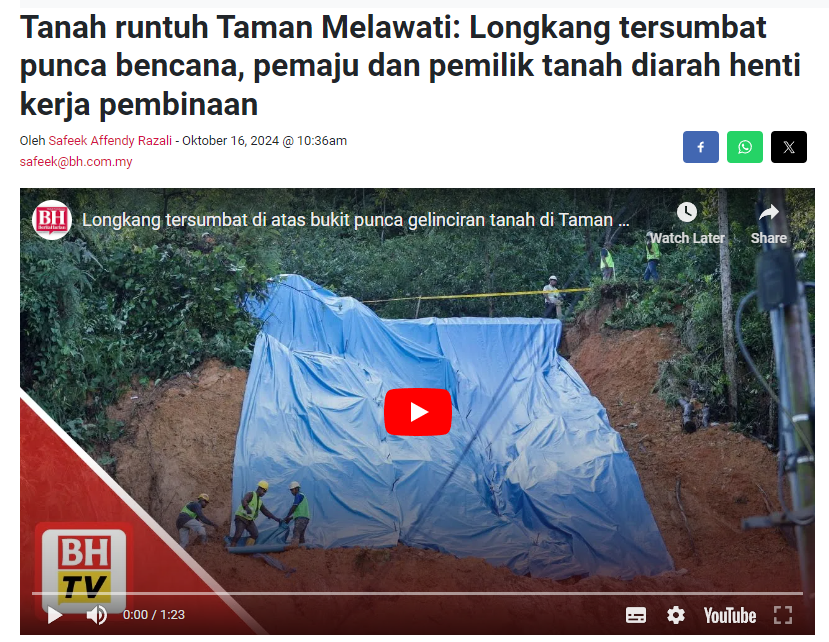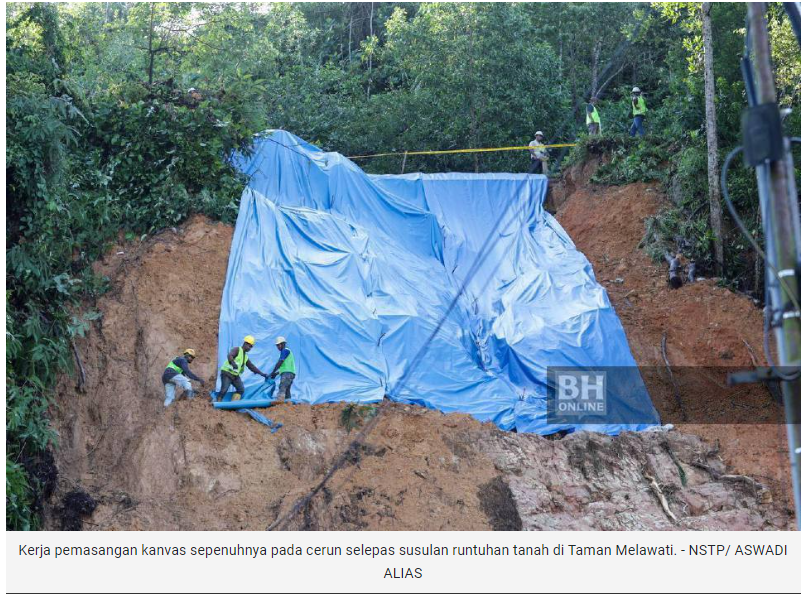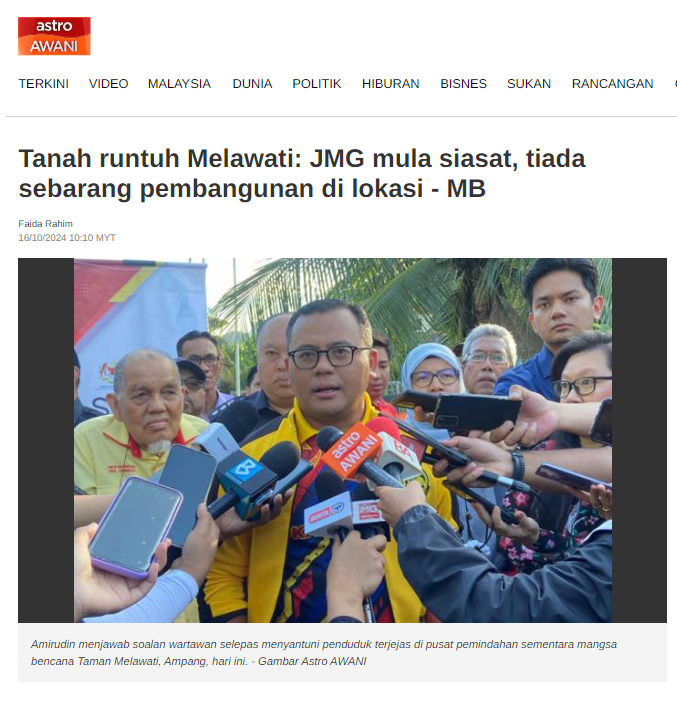GOMBAK: Residents who had to evacuate their homes for safety after the landslide that hit Taman Melawati are hopeful that they will be able to go home soon.
Having spent two days at a temporary shelter at a community hall nearby, they said they were thankful that the authorities had been taking good care of them.
Hasnah Said, 45, who has been living on Jalan E6 for six years, said she and her husband decided to evacuate on the day of the incident for her young children’s safety.
“We had to quickly grab our belongings and leave, and our children did not make it to school on Tuesday.
“But I’m glad that no one is injured in the landslide,” she said when met here yesterday.
Despite the unexpected upheaval, Hasnah felt grateful for the support and resources rendered by the authorities.
“The evacuation centre provided comfort and privacy and met our immediate needs.
“This is an extraordinary experience for our family,” said Hasnah, who recalled her family’s harrowing experience of being trapped in a mosque for a week with no food and water during a massive flood in 2014.
Yesterday, Hasnah and her family managed to return briefly to their home to collect essential items.
While she hoped to return permanently soon, what she wanted more than anything was the assurance of a safe place to live for her family.
“There have been concerns about the development of new housing units along other nearby roads, which are on the sloped hill.
“They look dangerous, but we can’t do much, as the area is private land.
“There should be stricter controls on hillside development to prevent any untoward incidents in the long term,” she said.
Another resident who only wanted to be known as Mat concurred, claiming that there are several abandoned bungalow projects and ongoing ones around the hillside in the area.
“I have been living here for many years, and I see more hillside bungalows being built. They just don’t look safe to me. I think this should stop,” he said.
Finance executive Jason Ng, 25, who evacuated with his mother and younger sister, said they did so for safety sake, as advised by the Public Works Department and Ampang Jaya Municipal Council.
He said he was hopeful that the authorities would find a permanent solution to the environmental issue after the technical and coordination meeting scheduled for tomorrow.
“Our family has been living here for more than two decades; this is the first time we encountered a landslide near our home,” he said.
Like other residents there, Ng hopes to be able to go home soon but wants the state government to be strict about approving hillside development and prioritise public safety.
“We can see many big bungalows built on the slope between Jalan E1 and Jalan E4; it’s dangerous, not forgetting the abandoned ones too.
“We can only hope that the authorities will conduct due diligence to ensure safety before approving any such projects in the future,” he added.
The landslide, which occurred on Tuesday at about 10am amid heavy rain, affected four homes, causing 33 residents to temporarily move out of the housing area on Jalan E6.
They have not yet received word on when they can return home.


